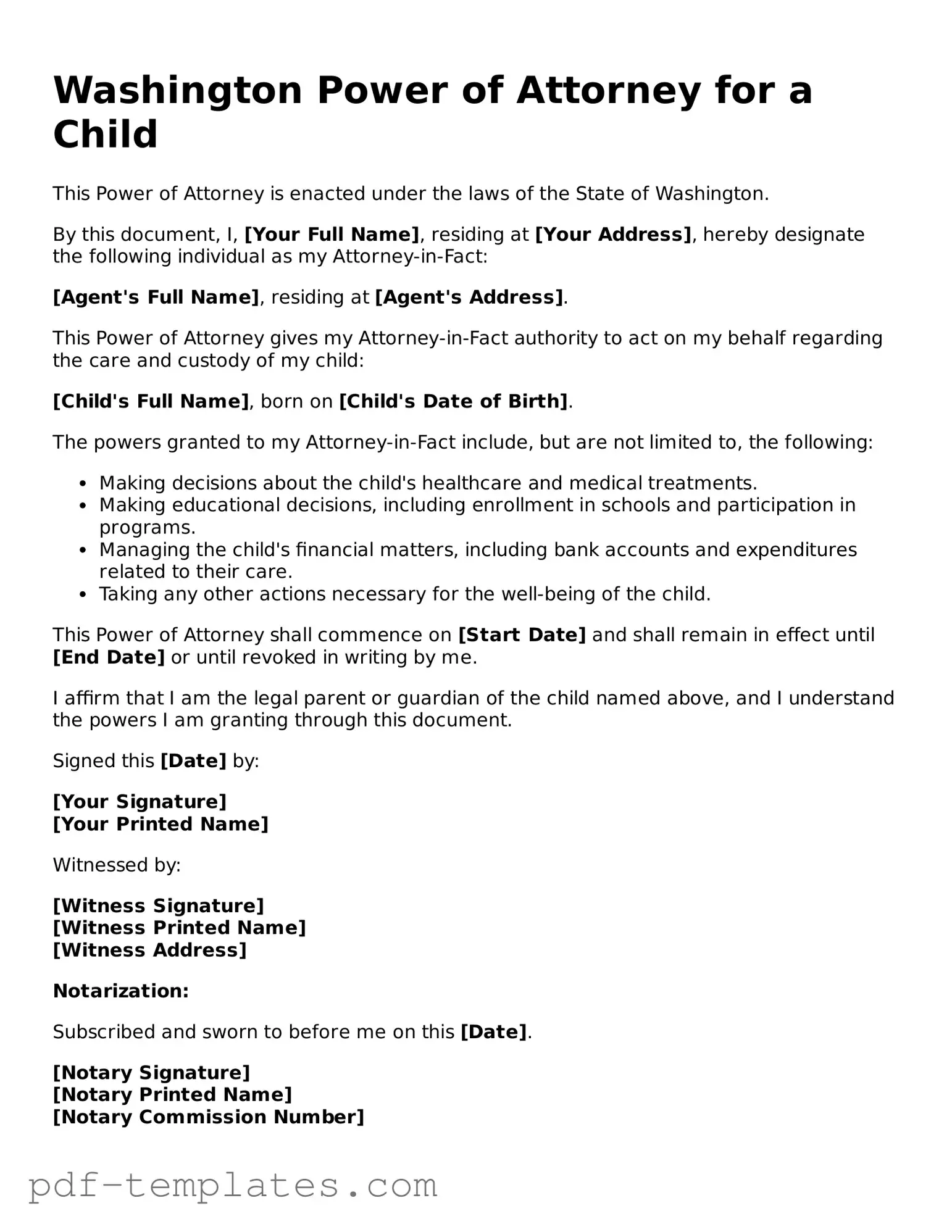The Washington Power of Attorney for a Child form shares similarities with the General Power of Attorney. Both documents allow individuals to appoint someone else to make decisions on their behalf. However, while a General Power of Attorney can cover a wide range of decisions, including financial and legal matters, the Power of Attorney for a Child specifically focuses on decisions related to the care and welfare of a minor. This targeted approach ensures that the appointed individual can make informed choices about the child's education, health care, and other essential aspects of their upbringing.
Another document that parallels the Power of Attorney for a Child is the Medical Power of Attorney. This form grants someone the authority to make medical decisions for another person when they are unable to do so themselves. While the Medical Power of Attorney is primarily concerned with health-related choices, the Power of Attorney for a Child encompasses broader responsibilities, including everyday care and supervision. Both documents emphasize the importance of having a trusted individual in place to act in the best interest of the person involved.
The Child Custody Agreement also bears resemblance to the Power of Attorney for a Child. Both documents address the care and welfare of a minor, but they serve different purposes. A Child Custody Agreement typically arises during divorce or separation proceedings and outlines where a child will live and how parenting responsibilities will be shared. In contrast, the Power of Attorney for a Child can be used in various situations, such as when parents need to delegate authority temporarily for travel or emergencies. Nonetheless, both emphasize the child's best interests and the need for clear arrangements regarding their care.
Similar to the Power of Attorney for a Child is the Guardianship Agreement. This legal document establishes a relationship where one person is given the authority to care for a child when the parents are unable to do so. While a Guardianship Agreement often involves a more permanent arrangement, the Power of Attorney for a Child is typically more flexible and temporary. Both documents ensure that a responsible adult is designated to make decisions for the child, highlighting the importance of having a safety net in place for minors.
The California Identification Card or Senior Identification Card form, officially detailed in form DL 410 ID, is critical for residents aiming to apply for, renew, or replace their ID card in California. It provides extensive instructions regarding eligibility, the application process, and essential details, such as the requirement for a Social Security Number. Additionally, it outlines specific criteria for renewing by mail and includes relevant sections on organ donor status, veteran benefits, and voter registration. For further information and resources on forms related to California, you can visit All California Forms, ensuring applicants are well-informed of their options and responsibilities.
The Caregiver Authorization Affidavit is another document that aligns with the Power of Attorney for a Child. This affidavit allows a parent to authorize a caregiver to make decisions regarding a child's care and education. Like the Power of Attorney for a Child, it is designed to ensure that someone other than the parent can step in and act on behalf of the child. However, the Caregiver Authorization Affidavit is often used in more informal situations, while the Power of Attorney for a Child is a formal legal document that provides broader authority.
Lastly, the Temporary Custody Agreement can be compared to the Power of Attorney for a Child. This agreement is often used when parents need to arrange for someone else to care for their child for a short period, such as during a family emergency or while traveling. Both documents allow for the delegation of parental authority, ensuring that a trusted individual can make decisions for the child. However, the Power of Attorney for a Child is more comprehensive, covering various aspects of the child's welfare beyond just temporary arrangements.
